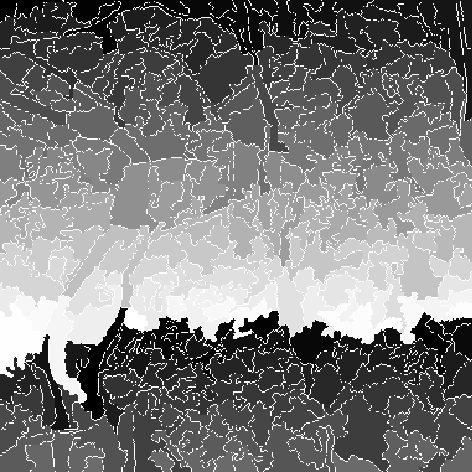 |
 |
![]()
An iterative process is then performed to find the two classes (built up
and non-built up areas) on the previous image with the help of built up
and non-built up areas samples.
An automatic algorithm, based on segmentation by edge detection of the second band, gives samples of the two classes (Figure 64).
 |
The original image contains textured areas: the built up areas. So a segmentation algorithm, able to deal with this type of regions, is performed: SDEF edge detector (Second Derivative Exponential Filter) based on the ISEF filter (Infinite Size Exponential Filter) (see 0.3.2.1 developed by IRIT [J. Shen, 1986].
SDEF algorithm is used to extract these edges, and consists in detecting zero crossings of the second derivative in the gradient direction. The first and second derivatives in x and y directions are computed by means of the differential operators of the exponential filter.
The two first derivatives are examined and the one with the highest
absolute value is chosen. Finally, a zero crossing of the second derivative
in this direction is verified. If the values of the two first derivatives
are close together, the zero crossing of the second derivative in each
of the two directions is examined . To avoid false zero crossings, the
sign correspondence principle between
the first and second derivative described in [J.
Shen, 1986] is performed.